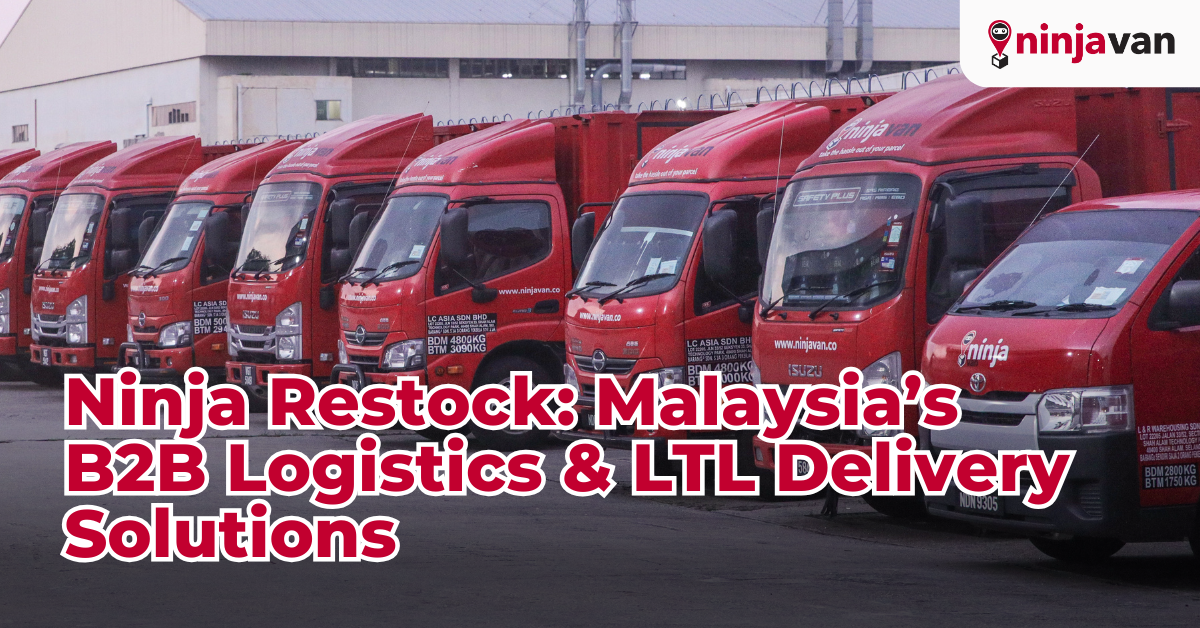Understanding budgeting is like having a secret code that can supercharge your business’s growth and stability. In this guide, our goal is to make small business budgeting crystal clear, so you can build a solid financial foundation for making important strategic decisions. When you have a deep understanding of your finances, potential challenges won’t catch you off guard, and you’ll be ready to tackle them head-on.
October’s Small Business Month: Get access to FREE downloadable templates, a specially curated mini article series and online masterclasses by our leading experts on how to manage and grow your business.
Psst, we also prepared exclusive Ninja Van promos!
Step 1: Understanding Your Present Financial Status

Before you put pen to paper to create a roadmap for your financial future, let’s pause for a moment to paint a clear picture of your current financial status. This step is akin to determining your starting point before you plan a journey on Google Maps. You need to know where you’re ‘located’ financially to craft the perfect route.
Financial Tools for Assessing Your Current Status:
- Balance sheets: Provide a snapshot of what you own (assets) versus what you owe (liabilities), giving you insights into your overall financial position.
- Income statements: Help dissect your revenues and expenses, painting a clear picture of your profitability over a specific period of time.
- Cash flow statements: Reveal the ebb and flow of cash into and out of your business, highlighting how well you’re managing your cash inflows and outflows.
Step 2: Establishing Clear Financial Goals

Imagine preparing for a long road trip without a journal or map detailing your destination? Sounds chaotic, right? Similarly, setting clear, specific, and measurable financial goals is imperative to bring structure and focus to your business budget plan.
Setting SMART Financial Goals:
- Specific: Set detailed goals like increasing net profit by 10%.
- Measurable: Ensure your goals can be quantified, such as $X in sales revenue.
- Attainable: Consider realistic business constraints while setting your goals.
- Relevant: Ensure goals align with your business objectives and market conditions.
- Time-bound: Establish timeframes for each goal like reaching a sales target in 3 months.
Step 3: Crafting a Detailed Budget

A business budget works like your personal Google Maps, indicating the most efficient route to meet your financial goals. It presents detailed information on your expected income (keeping in mind that income could vary each month), fixed expenditures like rent and utilities, variable costs such as materials costs that can change over time, and one-time expenses like investing in significant pieces of equipment.
Tips for Developing a Resilient Budget:
- Estimate expected revenue: To anticipate revenue, analyse your past financial statements, factor in seasonal trends, and include projected sales figures.
- List your fixed and variable expenses: Fixed expenses may include rent, salary, or utilities, while variable expenses may encompass advertising, maintenance, or supplies.
- Set aside a contingency fund: Always expect the unexpected. Allocate funds for unforeseen expenses, such as emergency repairs or market fluctuations.
- Monitor your budget: Regularly track your progress and make adjustments as needed to keep up with your evolving business needs and realities.
- Benchmark against competitors: Assess industry standards and best practices to identify areas for improvement and growth opportunities.
Step 4: Adapting Budgeting Strategies to Your Unique Context

Understanding budgeting in principle is just half the battle won. The real victory lies in developing a budget plan firmly rooted in your unique business context.
Examples of Localised Adaptations:
- If you run a software development business, consider the impact of currency fluctuations influencing overseas services.
- If you manage a quaint local bakery, factor in the recent surge in wheat prices.
By fleshing out such localised examples or situations, you delve deeper, contextualising your budgeting strategies to your specific industry and region, fostering more informed, insightful decision-making.
Step 5: Find the right partner

Part of budgeting involves keeping costs low. One of the ways to do this is actually outsourcing. By finding the right partner, your business can focus on its core strengths instead of worrying over many other issues.
A logistics partner like Ninja Van can certainly play a significant role in maximising cost-efficiency and profitability in your small business journey. By tapping into our years of experience and established supply chain network, your business can concentrate on growing and scaling.
Download the Ninja Biz app today and start shipping with us anywhere, anytime!







